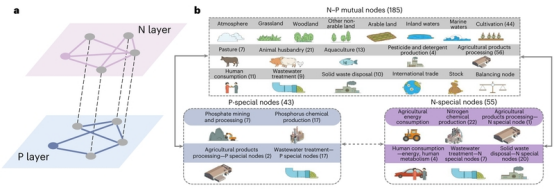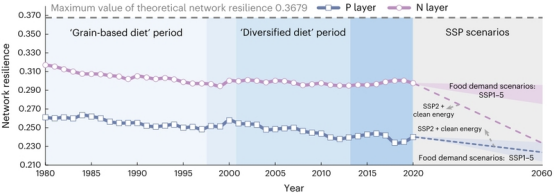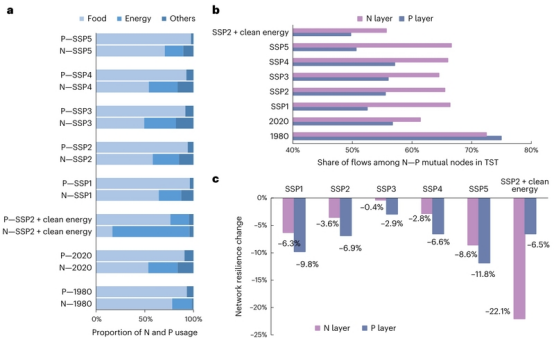Nature Food reports on Dr. YU Yadong's Research on the Resilience of the Coupled Nitrogen-phosphorus
2024-01-06
Recently, Dr. YU Yadong of ECUST School of Business, in collaboration with Prof. Hu Shanying's group at the Department of Chemical Engineering, Tsinghua University, has made significant progress in the study of the resilience of China's coupled nitrogen-phosphorus cycling network. The study was published in Nature Food, an internationally renowned journal, under the title "Decreasing resilience of China's coupled nitrogen-phosphorus cycling network requires urgent action".
Nitrogen and phosphorus are both important nutrients in the food system and key substances that lead to environmental pollution. The joint team constructed the first coupled nitrogen-phosphorus cycling network in China through material flow analysis, based on which they measured the network resilience and revealed its influencing factors by using ecological network analysis and other methods. The study shows that China's coupled nitrogen-phosphorus cycling network is a two-layer network consisting of 283 nodes, of which 185 nodes are nitrogen-phosphorus coupling nodes, and the nitrogen and phosphorus network layers are closely connected through the metabolism process of nitrogen and phosphorus elements in the natural ecosystems and the food system, thus forming a complex coupled nitrogen-phosphorus cycling system.
During the period of 1980-2020, China's nitrogen-phosphorus coupled cycling network is in the stage of over-efficiency, with a decreasing trend in toughness, and the difference between the maximum and minimum toughness of the nitrogen and phosphorus network layers is 7.61% and 12.57%, respectively. This will lead to a reduction in the ability of China's coupled nitrogen-phosphorus system to resist external risk shocks, and there is a risk of systemic collapse. The increase in the proportion of fertiliser application driven by food demand growth is a key factor leading to the reduced resilience of the coupled nitrogen-phosphorus network. Nodes in China's coupled nitrogen-phosphorus cycling network have both synergistic and trade-off effects on changes in the resilience of the nitrogen and phosphorus network layers. Compared with the nitrogen network layer, the phosphorus network layer is more affected by human activities.

Figure 1. Schematic structure of the coupled nitrogen-phosphorus cycling network in China
Based on the Shared Socio-Economic Pathways (SSP) scenario, the joint team also projected China's coupled nitrogen-phosphorus cycling network and its resilience in 2060. The study shows that under the SSP2+ clean energy scenario, China's coupled nitrogen-phosphorus system will undergo metabolic scale and metabolic pathway changes driven by demand for clean energy such as green ammonia and lithium batteries. Clean energy demand has a greater impact on the nitrogen network layer, while food demand has a more significant impact on the phosphorus network layer. Clean energy demand leads to more flows concentrated in nitrogen- and phosphorus-specific nodes, weakening the coupling strength between the nitrogen and phosphorus network layers. Without any regulatory measures, the resilience of China's coupled nitrogen-phosphorus cycling network will be further reduced (especially in the nitrogen network layer), which will not only threaten China's food security by lowering the resilience of the coupled nitrogen-phosphorus system to risky shocks, but may also release more reactive nitrogen into the environment, which will disrupt the nitrogen cycle and exacerbate the conflict between the energy and food systems.

Figure 2. Historical trends and future evolution of nitrogen-phosphorus cycle network resilience in China, 1980-2060
Figure 3. Nitrogen-phosphorus cycle network structure and its resilience in China in 2060 under the shared socio-economic pathway
To improve the resilience of China's nitrogen-phosphorus cycle network and advance the sustainable management of China's nitrogen-phosphorus resources, the joint team proposed and quantified the effects of five measures at the production, consumption and trade levels, respectively. These include reducing chemical fertiliser use, improving aquaculture feed efficiency, reducing food waste, adopting healthier eating habits and optimising food trade strategies.
